Physical Address
304 North Cardinal St.
Dorchester Center, MA 02124
(see Fig. 29.1 )
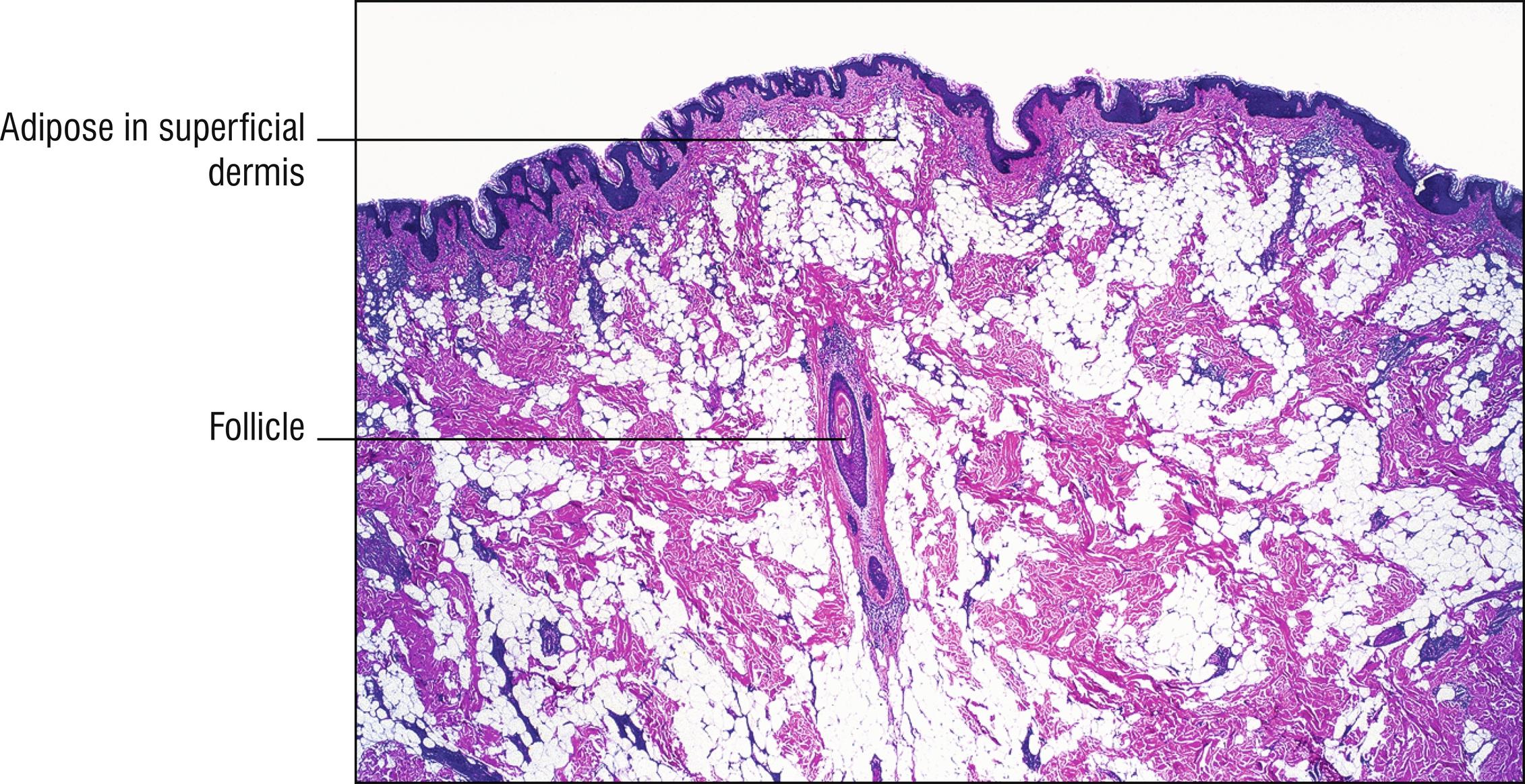
Rare clustered papules or nodules of the buttock with onset at birth or childhood.
Adipose present in superficial dermis
Increased dermal blood vessels often
Lipofibroma variant of acrochordon (27.4): much more common, adult onset, usually solitary, pedunculated nodule with a narrower base. Many doctors misname these large tags “nevus lipomatosus” by mistake.
Goltz syndrome (11.8): nearly no dermis, clinical features much different.
Piezogenic pedal papules (29.1): papules on the heels , occasionally painful (1.96), thought to be pressure-induced herniations of adipose through an atrophic or secondarily thickened dermis.
Adipose may also be found superficially in the dermis in Proteus syndrome, Michelin tire baby, lipedematous alopecia (10.13), some lipomas (29.2), some melanocytic nevi (nevus lipomatosus et pigmentosus; 20.5), and healed old wounds.
(see Fig. 29.2A–E )
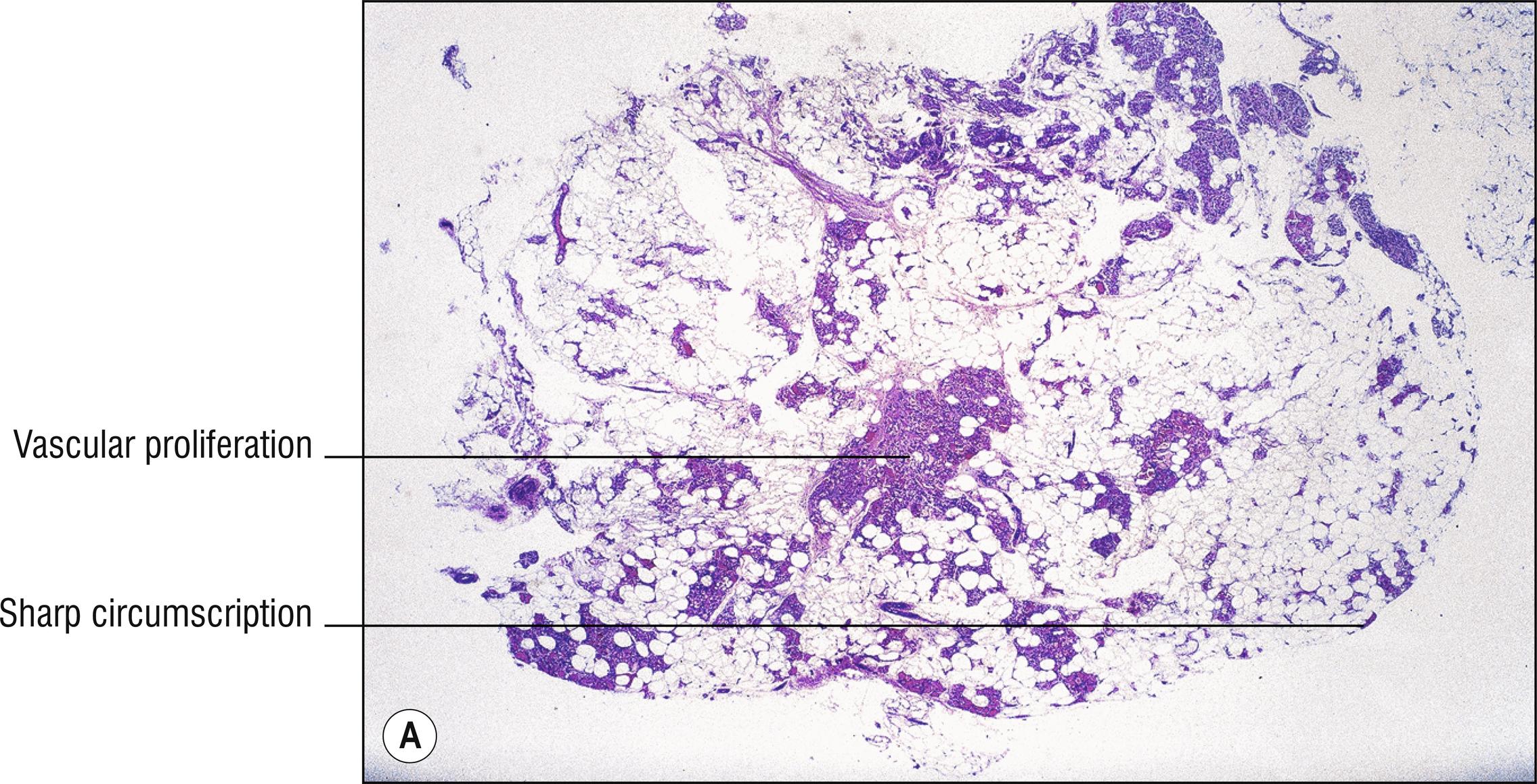
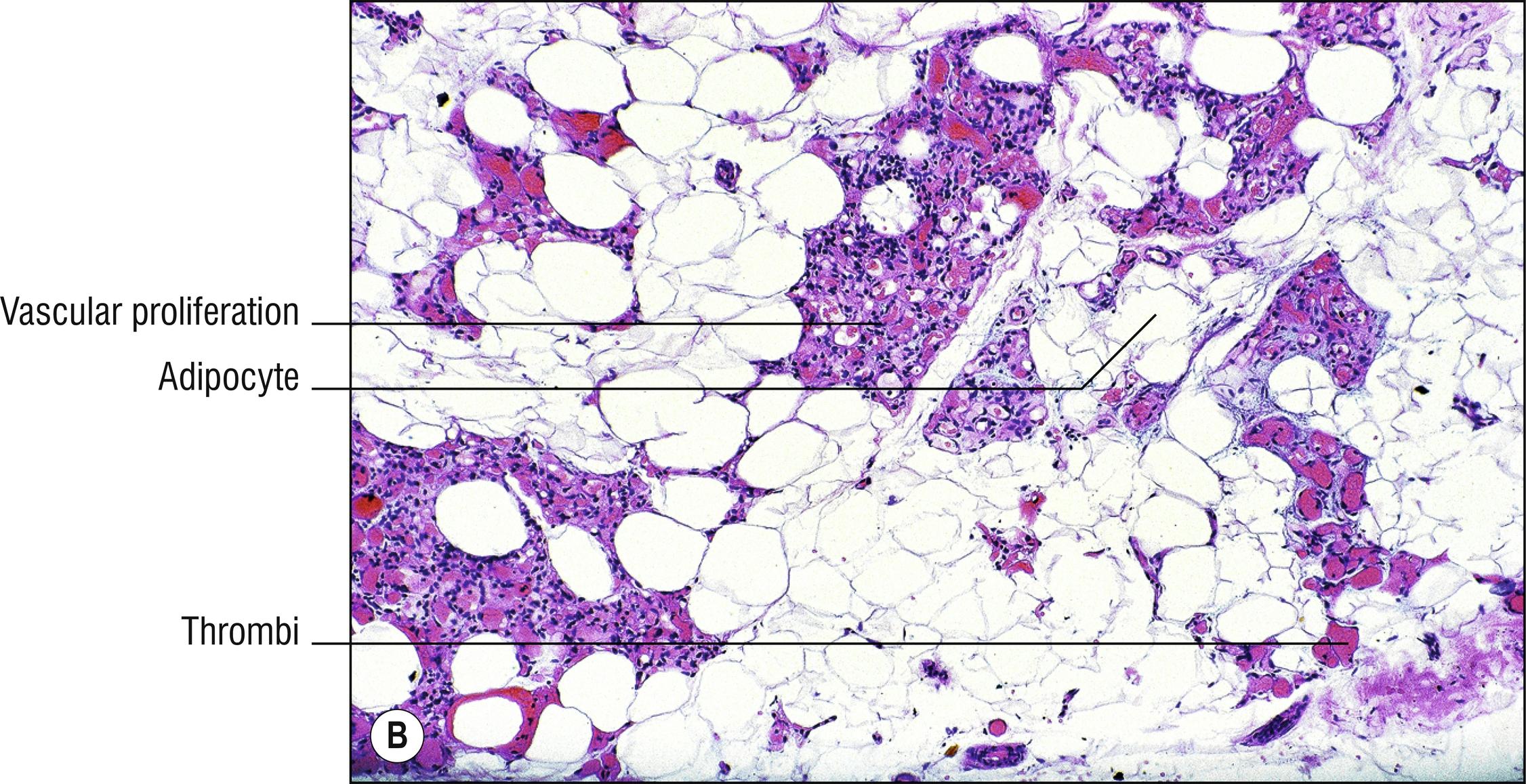
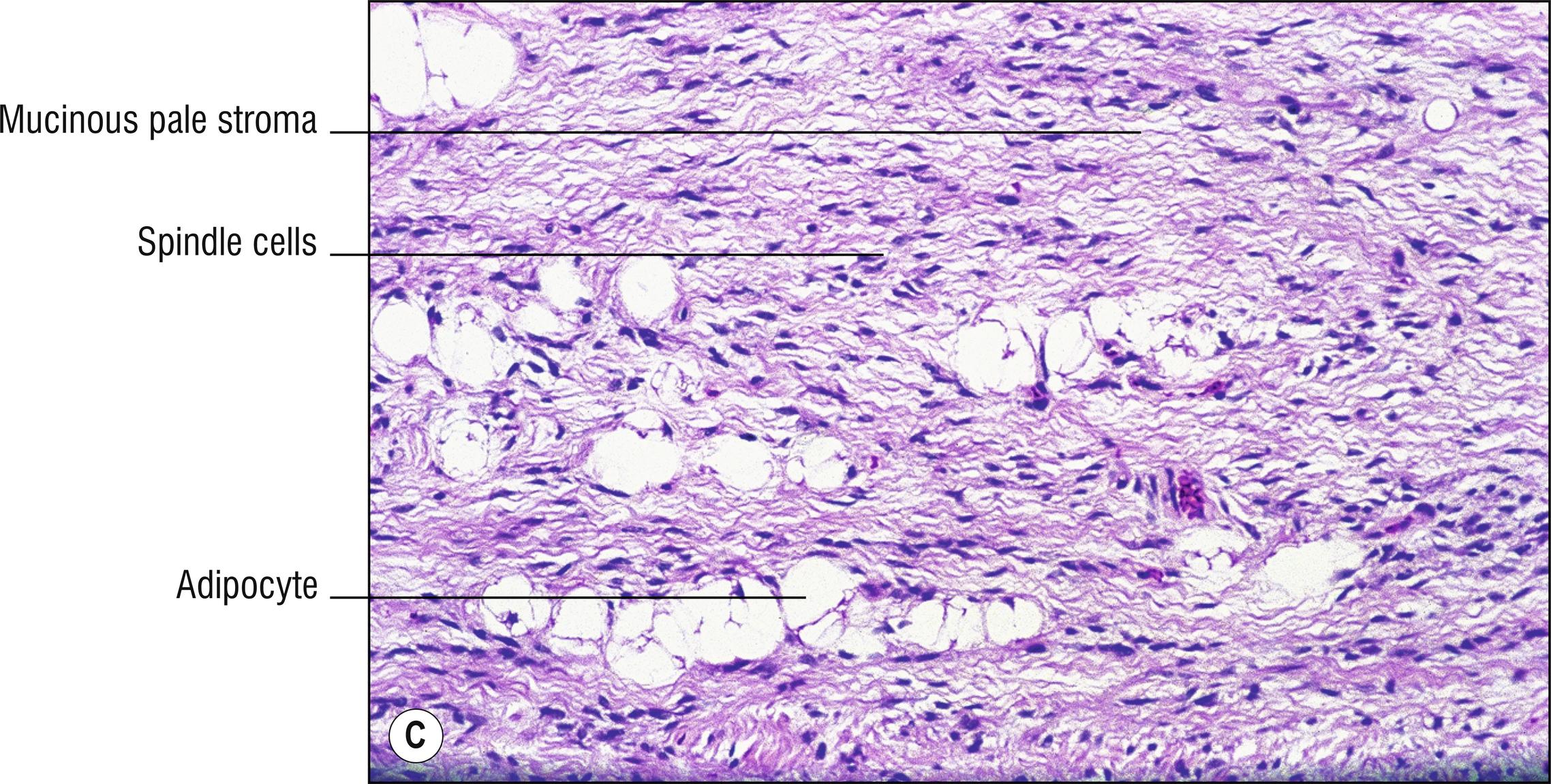
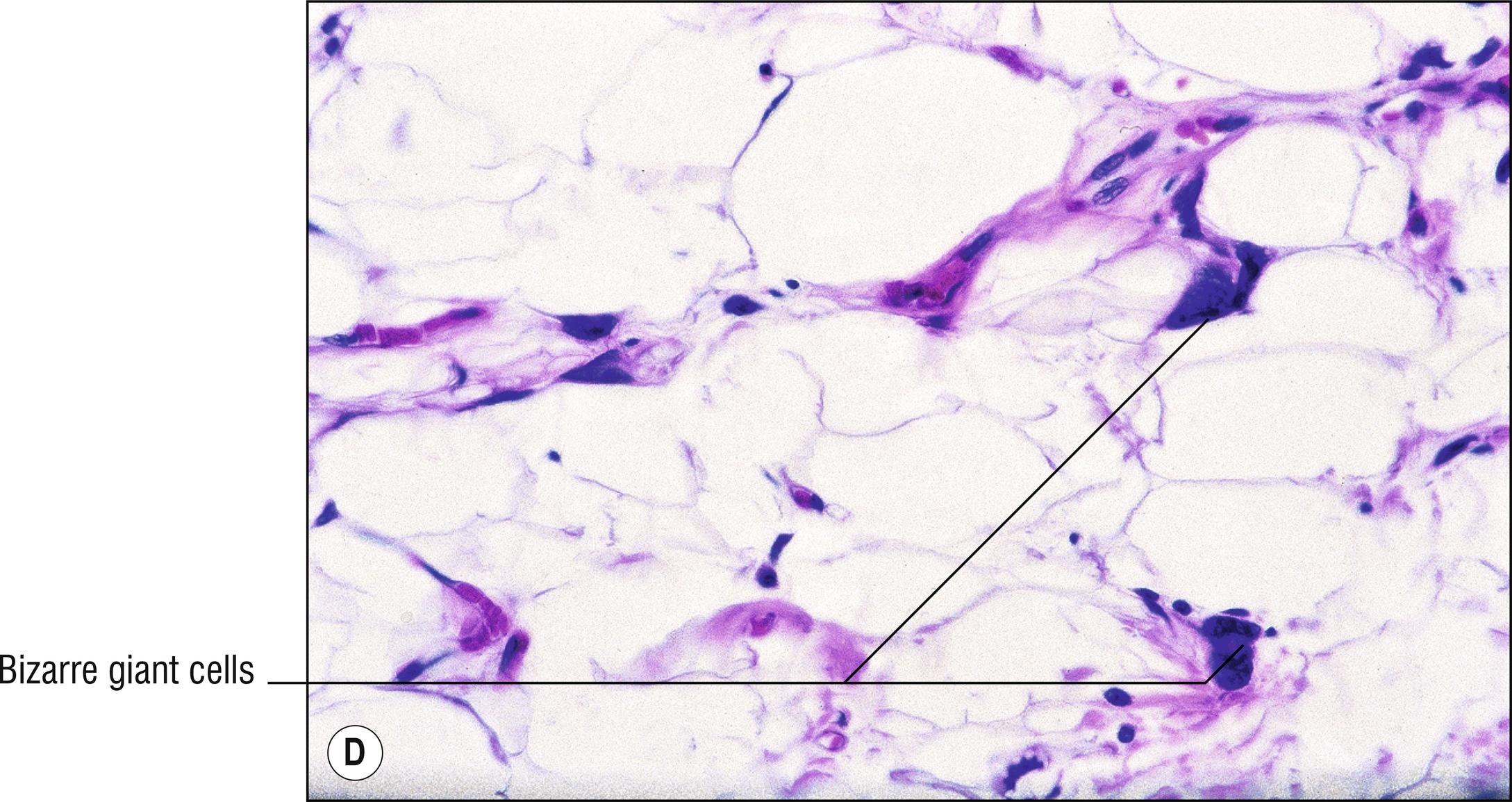
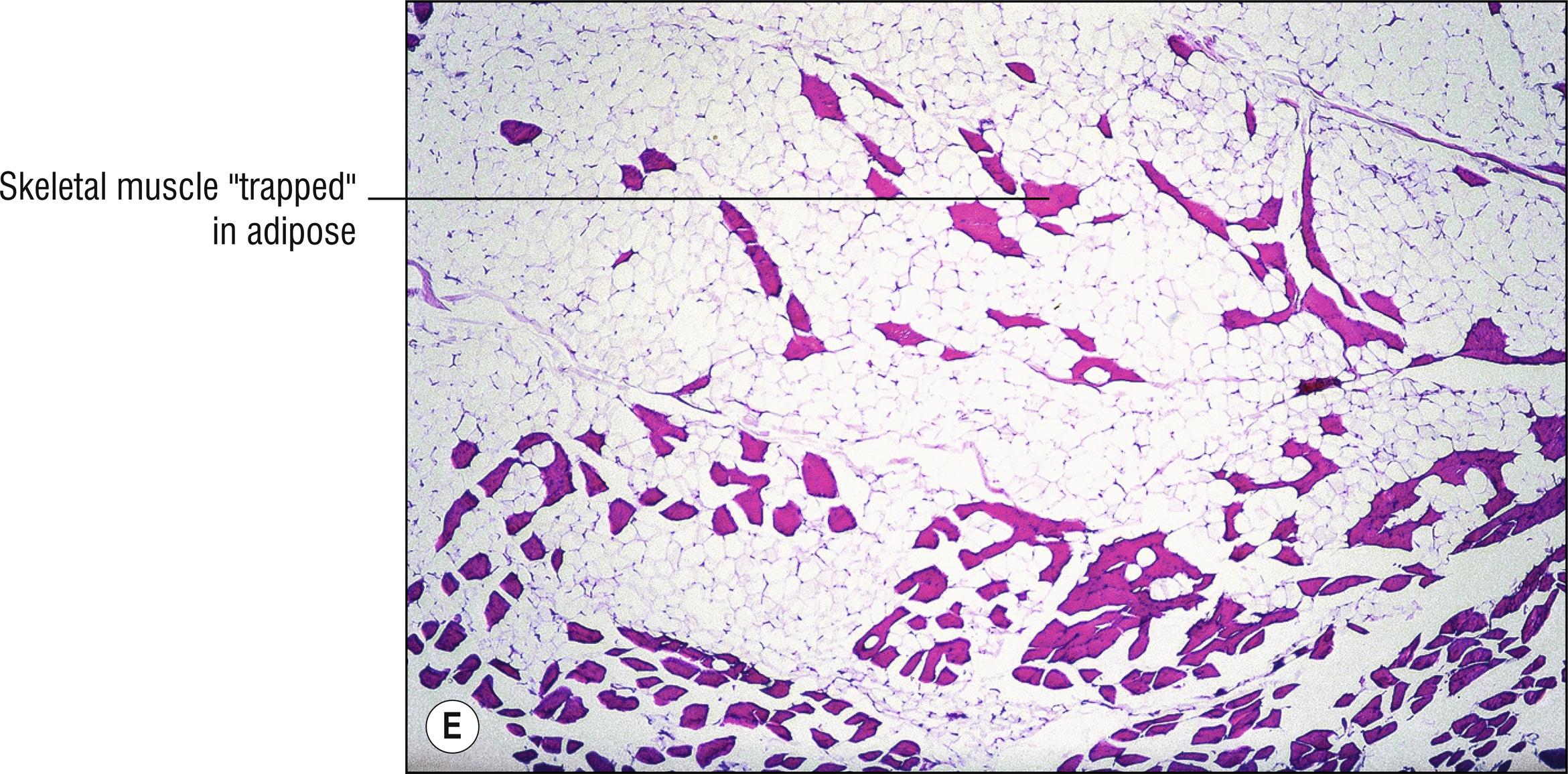
Very common soft subcutaneous (1.135) nodules.
Proliferation of normal-appearing adipose in the subcutaneous fat
Sometimes sharp demarcation (rarely a capsule) from normal adipose
Angiolipoma: many small blood vessels , often thrombi (1.137), more likely to be well circumscribed and painful (1.96).
Fibrolipoma: increased fibrous tissue.
Spindle cell lipoma: usually on posterior neck (1.86) or upper back, more in males, CD34 + spindle cells (1.131) in mucinous stroma (1.83), increased collagen and mast cells (1.78).
Pleomorphic lipoma: usually on posterior neck (1.86), hyperchromatic adipocytes, bizarre floret giant cells (1.84) that have overlapping nuclei, a pseudomalignancy (1.118), resembles liposarcoma but only has rare lipoblasts and has no necrosis.
Infiltrating lipoma (intramuscular lipoma): skeletal muscle trapped between mature adipocytes.
Chondroid lipoma: rare, encapsulated, chondroblasts and lipoblast-like cells, myxoid stroma, S-100 + in cartilaginous areas, may resemble hibernoma (29.4), myxoid liposarcoma (29.5), or extraskeletal chondrosarcoma.
Myolipoma: well-circumscribed subcutaneous nodule, mostly smooth muscle positive for actin and desmin, with about one-third adipose.
Angiomyolipoma: probably is a variant of angioleiomyoma (29.6) with fatty metaplasia. The angiomyolipoma of the kidney is associated with tuberous sclerosis (27.3), but is somewhat different and probably not related to the subcutaneous lesions.
Dercum’s disease (adiposis dolorosa): multiple painful lipomas (1.96), usually with ordinary histology or angiolipoma.
Multiple symmetric lipomatosis (Madelung’s disease): multiple diffuse lipomas, mostly in males, often in a horse collar distribution.
Liposarcoma (29.5): large size, lipoblasts , and cytologic atypia.
Rare subcutaneous nodule or mass in young children , more common in males. Lesions may recur after excision, but do not metastasize.
Subcutaneous tumor (poorly circumscribed or encapsulated) of immature fat cells with lipoblasts (lipid vacuoles displace the nuclei)
Mucinous stroma (1.83)
Liposarcoma (29.5): histologically almost identical, but occurs in adults, with more cytologic atypia.
(see Fig. 29.4 )
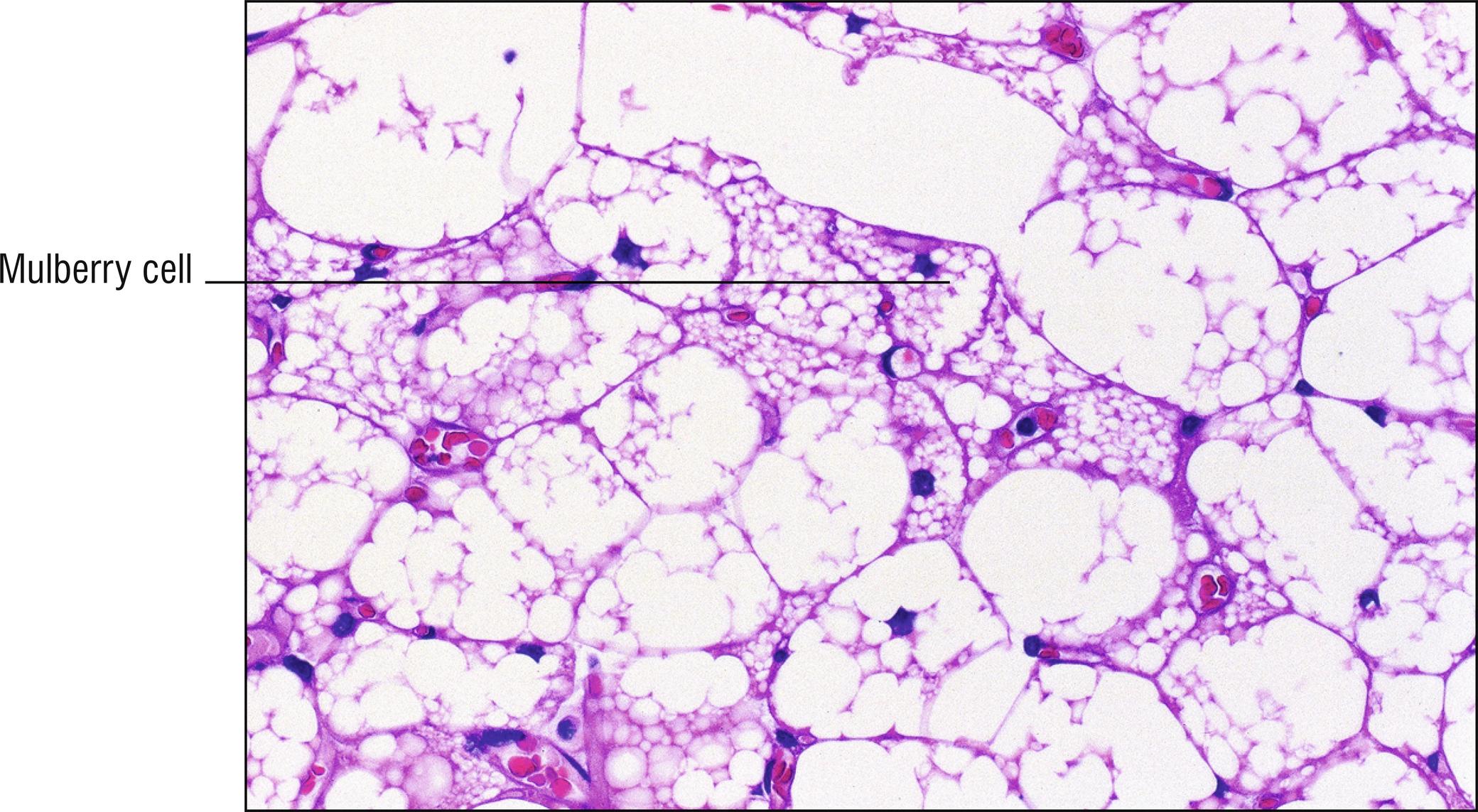
Very rare benign lipoma of immature brown fat in adults. It grows slowly, and is most common on the neck (1.86), upper back , and axilla (1.10).
Subcutaneous encapsulated tumor of mulberry cells (large cells with a central nucleus and multivacuolated granular cytoplasm), sometimes mixed with mature adipocytes
Lesions with foam cells (1.46) or clear cells (1.22), such as foamy macrophages related to fat necrosis in panniculitis (1.101) are rarely confused with a hibernoma.
Become a Clinical Tree membership for Full access and enjoy Unlimited articles
If you are a member. Log in here